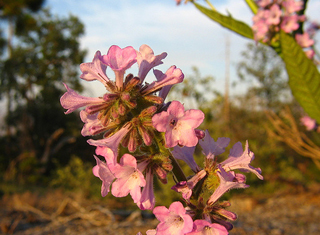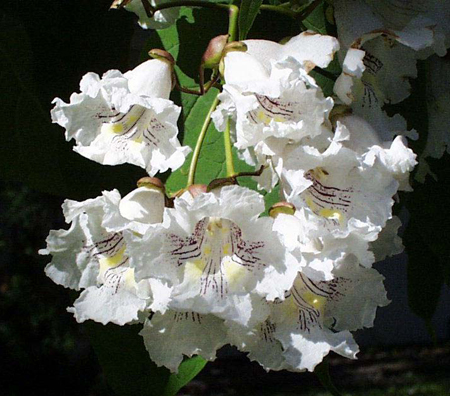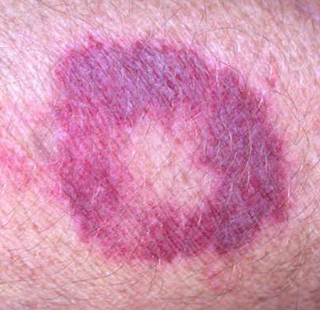Human Flower Project
Tuesday, March 25, 2008
Poodle Dog & Other ‘Biting’ Flowers
You know better than to eat just any flower (right?). With spring coming into bloom, check the picking impulse, too. Some blossoms will punish you for it.

Poodle dog bush (Turricula parryi) in flower—
It’s a tempting year for California hikers
Photo (detail): Arnie (fractalv)
In our continuing effort to keep looking beyond “just pretty” where flowers are concerned, we were thrilled—wincingly—to come upon Eugene Fields’s ominous story of “poodle dog bush.” Sounds like man’s best friend. But Fields reports that the lavender flowers of Turricula parryi will bite.
The plant is blooming heartily now through the Santiago and Modjeska canyons of California. It’s an especially good year for the plant, as last October’s wildfires cleared the way for its resurgence. Hikers will encounter the tall blooming stalks now and may be tempted to break off a stem or two or three. Better leave that poodle be. The flowers produce an allergic skin reaction similar to poison oak. “Symptoms range from itching to a rash or blisters lasting as long as two weeks. George Ewan with the Orange County Fire Authority said the pain is reminiscent to coming in contact with stinging nettles. ‘It’s like that that except it doesn’t wear off,’ Ewan said. ‘It goes for quite a while.’”
Unless you’re into scourges, pass on by (Info on newfangled styles of penance available upon request).
Many thanks to Arnie for supplying us with the beautiful photo of poodle dog bush in bloom (above). He writes that this specimen of Turricula parry was “found at about 5200’ elevation in the San Bernardino National Forest near Lake Arrowhead, CA. Bush was about 6 feet round and flowers towered over my head, the flowers being about 1” across.”

Another biting flower, from the Catalpa tree (Catalpa speciosa)
Photo: Missouri State Univ.
The poodle dog led us down a trail in search of other flowers toxic to human skin. The Ag Extension folks in Connecticut provide this good list of plants that cause dermatitis. Sometimes it’s the leaves, bark, roots, or sap that irritate skin, but flowers, even “pretty” ones, can cause outbreaks too. To use Cesar Milan’s terminology, “Red Zone Dogs” of the flower world include Catalpa speciosa, Anthemis arvensis, and Ailanthus altissima (Tree of Heaven). The latter is often considered a “trash tree,” one with some fight in it. Ohio State
“ title=” botanists warn”>botanists warn, “Gardeners who fell the tree may suffer rashes.”
 Hickey? Nope. A blister caused by Giant Hogweed
Hickey? Nope. A blister caused by Giant Hogweed
Photo: Canadian Weed Science Society
Nobody should tangle with Zigadenus paniculatus flowers, which go by the name “Death lily” for a reason. And we’ve written here before about the perils of Giant Hogweed (Heracleum mantegazzianum). In case you forgot, the photo at right shows what its blooms can do.
Just a drop more toxicity—Florists have learned the hard way that some of our favorite flowers can injure the skin. No…not tulips? ‘Fraid so.




